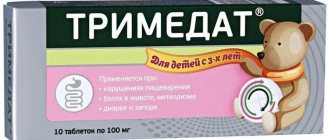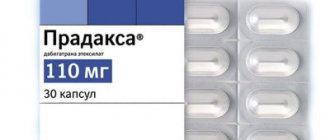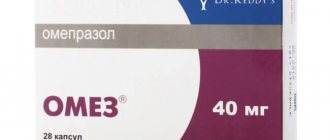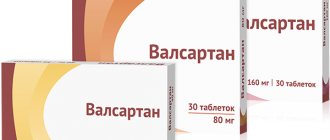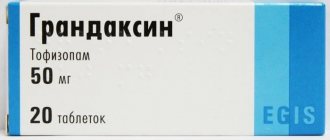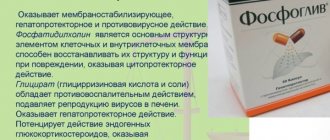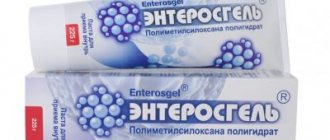pharmachologic effect
Manufacturer: MERZ PHARMA GMBH AND CO.
(Germany) Release form: gel for external use
Active ingredients: onion bulb extract, heparin, allantoin
Analogues: Dermatix, Imoferase, Fermenkol
Contratubeks is a combined drug with anti-inflammatory, regenerative, fibrinolytic and antithrombotic properties. The medication stimulates cell regeneration without enlargement and inhibits the growth of keloid cell structures.
Description of the drug
The main active ingredients of the drug are sodium heparin, allantoin and onion extract. Contractubex is a water-based gel and has a dark brown color. The combination of active ingredients stimulates the resumption of cell growth without leading to excessive tumors.
The special composition of the drug actively affects the affected skin in a short time.
Onion extract works as an anti-inflammatory agent and is especially effective on fresh tissue damage. Allantoin helps soften and dissolve dead cells.
This is necessary so that the body can get rid of excess connective tissue that appears during the formation of scars. And heparin is a well-known remedy against blood stagnation, thrombosis and edema.
Indications for use of Contratubeks
The medication is indicated for the following conditions:
- contractures of joints and tendons due to injuries;
- scars that occur after injuries, surgical interventions, burns, amputations;
- Dupuytren's contracture (scars and shortening of tendons in the hand area);
- cicatricial changes of an atrophic nature after furunculosis or acne;
- stretch marks on the abdomen after childbirth.
The gel can be used as a prophylactic agent to prevent the development of scars.
Contratubeks - instructions for use
According to the instructions for use of Contratubes, the drug is applied to the scar area by lightly rubbing 2-3 times a day. The gel consumption is 0.5 cm per lesion area of 20–25 square meters. see. The course of treatment for fresh scars lasts for 1 month.
If there are old and dense scar changes, the gel is applied under an occlusive (sealed) bandage at night and treatment measures continue for up to six months. In the presence of Dupuytren's contracture, therapy for scar changes on the hand can last 1 year.
Clearvin
This scar cream contains margosa, emblica officinalis, calamus, lodhra, turmeric, madder cordifolia, kafal and aloe vera, processed in sesame oil, beeswax, holy basil, borax. Clearvin is suitable not only for treating scars and stretch marks, but also helps remove age spots, acne, and dark circles under the eyes. "Clearvin" heals, nourishes the skin, removes fresh scars and scars. The product stimulates tissue metabolism well, softens the skin, renews it and improves microcirculation. The cream should be applied to the skin two to three times a day - the first results will be noticeable after five to six weeks.
Clearvin
RealCosmetics, Russia
Clearvin is an effective multifunctional cream for problem skin, containing extracts of rare and unique herbs.
Herbs are of great value and are beneficial in solving skin problems and helping to overcome skin imperfections. An excellent cream smoothes the skin and maintains elasticity. Natural antioxidants, vitamin E and herbal microcomponents improve blood circulation, preventing the formation of dark circles under the eyes. The cream makes your skin soft, smooth and gives a healthy color. from 54
5.0 1 review
1426
- Like
- Write a review
Analogs of Contratubeks
The pharmaceutical market is represented by a wide range of Contratubex substitutes for external use. Among them there are analogues of domestic production and foreign companies. These drugs are sold in the pharmacy chain in the form of:
- generics;
- synonyms;
- combined means.
These medications are successfully used in practice, allowing doctors to select with maximum efficiency the appropriate analogue that gives a high therapeutic result.
Table of Contratubeks analogues with price and country of origin.
| Analogue | Cost in rubles | Manufacturer country |
| Contratubeks | 500-800 | Germany |
| Dermatix | 1200-2400 | Switzerland |
| Imoferase | 500-970 | Russia |
| Fermenkol | 660-1500 | Russia |
| Solcoseryl | 380-450 | Germany |
| Kelo-cote | 1400-2000 | USA |
| Mederma | 650-800 | Germany |
| Methyluracil | 50-180 | Russia |
| Camelox | 250-380 | Russia |
| Levomekol | 115-150 | Russia |
The price of Contratubeks analogs varies over a wide range. Among the large number of preparations for external use, you can purchase analogues of Contratubex gel cheaper. These medications are not inferior to foreign drugs in terms of treatment effectiveness.
What else can replace Contratubes ointment, what analogues? You can supplement the list of medications with the following medications:
- Clearwin;
- Curiosin;
- Mepiform patch;
- Cicatrix;
- Heparin ointment;
- Dolobene;
- Dermatix ultra;
- Imoferase;
- Venitan.
You can purchase analogues of Contractubex ointment for scars from this list, cheaper or more expensive, depending on the manufacturer. What else can replace Contratubes, which drug in comparison will be the best for the treatment of scars?
Contratubeks or Dermatix - which is better and more effective?
Manufacturer: MEDA PHARMACEUTICALS SWITZERLAND (Switzerland)
Release form: silicone gel for external use
Active ingredient: mixture of polymeric organosilicon compounds (polysiloxanes)
Both drugs have equivalent indications, but a different mechanism of action. Dermatix gel will be best for scars that have formed recently, especially if they are present on the face. For formed keloid scars, Contratubeks will be more effective, and it is also more affordable.
According to patient reviews, the analogue is well tolerated and does not cause discomfort or side effects. Its use is possible for pregnant women and during lactation.
What to choose from Contractubex analogues?
The described drugs provide an opportunity to choose the best option for most situations and for any budget. The success of their use will depend on compliance with the instructions and recommendations of the doctor. It is possible to remove unaesthetic scars, stretch marks, scars in a relatively short period of time. Thanks to the development of pharmaceuticals, this has become available to everyone who needs it.
You should choose the drug that is most suitable in a particular case. It is necessary to take into account the degree of sensitivity of the skin, the healing time of the wound and the age of the scar tissue. If in doubt you cannot choose a specific option, you can consult a dermatologist or cosmetologist. They will help you find the remedy that will be optimal for each individual case.
Contratubeks or Imoferase - which is better for scars
Manufacturer: PETROVAX PHARM (Russia)
Release form: cosmetic cream
Active ingredient: hyaluronidase
Both medications help the patient get rid of skin defects and scars. This is especially true if they are on the face. Imoferase is a cheaper analogue of Contratubex for scars. Its effectiveness remains at a high level and is no less than the activity of the base drug.
Imoferase copes well with fresh skin defects, which within 1–2 months can be completely eliminated or become less noticeable.
How to choose a scar cream?
Let's decide what you need to pay attention to if you are choosing an anti-scar product:
- Skin type.
If you have combination or oily skin, choose a cream-based scar treatment. The cream is well absorbed, it has a light texture, it does not clog pores and does not leave a greasy feeling. Scar ointment will not work in this case (especially if the scar is on the face) - it clogs the pores and provokes the formation of acne, and then dealing with post-acne is even more problematic. - Tendency to allergies.
You need to understand that no matter how good the remedy for scars, the body can react to any of its components. Therefore, if you are allergic, be sure to test it on your wrist before using the drug. - Scar location.
Many scar creams contain harsh ingredients that often cause irritation if applied to the face or neck (tender areas of the body). If you have a scar on your face, it is better to choose a product that is as natural as possible, has a gentle effect and rarely causes side effects.
It is not advisable to use several scar treatments at once because they can react with each other and cause unpredictable reactions. During pregnancy, scar treatments should be used with caution, since a woman’s immunity decreases, susceptibility to allergens increases - and even local products can cause allergic reactions.
Read also: Top 5 universal remedies for burns The most effective remedies for burns: thermal and solar.
Contratubeks or Fermenkol - which is better?
Manufacturer: HIGH TECHNOLOGIES (Russia)
Release form: cosmetic gel
Active ingredient: collagenolytic collagenases (proteases)
Fermenkol is a new generation enzyme medicine used in the treatment of skin defects. The use of Contratubeks will be a priority in the postoperative period or after a recent injury. It is more effective because it has an anti-inflammatory, bactericidal effect and prevents vascular thrombosis in the scar area. Such comprehensive care for damaged skin promotes better skin restoration.
A properly selected analogue of Contratubex will not only prevent the formation of scars after injuries and surgical procedures, but also significantly improve the condition of old keloid scars.
How to remove scars using traditional methods
There are several home remedies that can help in treating scars and scars if they are fresh.
- Pea flour.
Flour should be diluted with warm milk, applied to the scar and left for an hour. - Compress from thuja leaves.
Prepare an alcohol tincture from thuja leaves and apply a compress to the scar area twice a day (for 40 minutes). - Calendula compress.
Take 0.5 liters of boiling water, add 2 tbsp. l. calendula flowers and let it brew for two hours. Strain and apply the compress for 15 minutes five to six times a day. - Fenugreek seed decoction.
Take fenugreek seeds and boil them for seven minutes. Apply the prepared decoction to the affected areas of the skin. - Lemon.
Rub lemon juice over areas of skin that have scars. - Almond oil.
Almond oil also works well on small scars if you do a light massage with it. - Sandalwood paste.
This folk remedy for scars is considered one of the most effective. You need to soak sandalwood powder in milk overnight. In the morning, apply the mixture to the affected areas and wait until it dries. Rinse off with cold water. - Banana puree.
Take a ripe banana, puree in a blender and apply to the skin for seven to ten minutes. - Cabbage.
Spread honey on a cabbage leaf, add a few drops of vodka and Vishnevsky ointment. Apply to scars several times a day.
Solcoseryl
Manufacturer: Valeant Pharmaceuticals Germany GmbH (Germany)
Release form: gel, ointment for external use
Active ingredient: protein-free extract from the blood of healthy dairy calves
Solcoseryl for external use is a medicine that helps stimulate metabolic, regenerative and trophic processes in tissues. The product helps to increase collagen synthesis. The drug is effective for external injuries, burns, frostbite. This analogue of Contratubex gives a good therapeutic effect for bedsores and trophic ulcers.
Kelo-cote
Manufacturer: ADVANCED BIO-TECHNOLOGIES (USA)
Release form: silicone-based gel
Active ingredient: polysiloxane, silicon dioxide
Kelo-coat gel is used to treat keloid and hypertrophied scars of various origins. They can replace Contratubeks gel, which, when applied to the scar, forms a waterproof and airtight film. Under such a framework, collagen synthesis is normalized, which does not allow the scar to grow. The medication reduces itching, discomfort, the severity of scars, and restores the color of the skin.
Kelofibrase
This German anti-scar cream contains sodium heparin, vitamin E, D-camphor, levomenthol, and urea. These components perfectly moisturize the skin, make rough scars softer, more elastic, and stimulate blood circulation. Kelofibrase also relieves inflammation and relieves pain. Those who have used this scar cream have noted that scars dissolve, smooth out, and become lighter. The drug has virtually no side effects; it can be prescribed to children over one year of age.
Kelofibrase
Sandoz, Germany
Kelofibraza cream helps get rid of scars of any origin - hypertrophic, burn, postoperative, keloid.
from 3880
5.0 1 review
1288
- Like
- Write a review
Mederma
Manufacturer: Merz Pharma (Germany)
Release form: gel for external use
Active ingredient: cepalin, allantoin
The drug for external use Mederma is a combined biologically active agent with anti-inflammatory and reparative effects. Due to the active substances of the drug, hydrophilicity and tissue softening are stimulated. This process leads to smoothing of the collagen fibers that form the basis of the scar and inhibition of its synthesis processes.
Dexpanthenol
This ointment for scars, scars and cracks contains the substance dexpanthenol, B vitamins, petroleum jelly, sea buckthorn oil, lanolin, citric acid. "Dexpanthenol" is good for scars after chickenpox; it is prescribed to women who are breastfeeding to treat cracked nipples. "Dexpanthenol" has virtually no contraindications or side effects, but it must be used strictly according to the instructions.
Dexpanthenol
JSC "Tatkhimfarmpreparaty", Russia
Dexpanthenol is a drug for external use that has a regenerating and metabolic effect, as well as some anti-inflammatory effect.
Dexpanthenol is a B vitamin, a derivative of pantothenic acid. In tissues, dexpanthenol is converted into pantothenic acid, which is part of coenzyme A. As part of coenzyme A, pantothenic acid takes part in the processes of acetylation, lipid and carbohydrate metabolism, the formation of acetylcholine, porphyrins and corticosteroids. from 66
5.0 1 review
1211
- Like
- Write a review
Folk remedies help get rid of fresh scars
Photos from open sources
Methyluracil
Manufacturer: JSC BIOSINTEZ (Russia)
Release form: ointment for external use
Active ingredient: dioxomethyltetrahydropyrimidine
Methyluracil belongs to the group of tissue regeneration stimulators. This analogue of Conratubex ointment for scars and scars helps to normalize metabolic processes in cellular structures, accelerates the growth of granulations and the formation of epithelium at the site of the wound surface. The medication inhibits the breakdown of proteins and stimulates the renewal of structural parts of cells.
Cicatrix
The use of silicone compounds is considered the gold standard in the treatment of scars and scars. In addition to liquid silicone, Cicatrix contains plant extracts and sphingolipids (cosmetic substances that are also used in pediatrics). "Cicatrix" contains Asian centella, which stimulates collagen production and reduces inflammation, and Scots pine extract - improves the protective properties of the skin and tones. Sphingolipids (sphingosine and ceramides) are part of cell membranes - they restore the structure of the epidermis, maintain its lipid balance, and make scars elastic and soft. Literally after a month of constant use, you can notice the positive effect of the cream if these are young scars. The old ones decrease over the course of the year.
Cicatrix
Laboratorios Virens SL (Laboratory Virens), Spain
It is recommended to use for the regeneration of skin, especially damaged after surgery, burns, fresh and old scars, keloids, post-acne, stretch marks on the skin.
from 2212
5.0 2 reviews
763
- Like
- Write a review
Post-acne treatment
Photos from open sources
Camelox
Manufacturer: JSC VERTEKS (Russia)
Release form: gel for external use
Active ingredients: allantoin, sodium heparin, onion extract, bromelain, rosemary essential oil
The Russian analogue of Contratubeks, Camelox gel, can be used to treat any type of scars. Thanks to the combined composition of the active ingredients of the drug, the following occurs:
- stimulation of regenerative processes of the skin;
- softening and increasing its elasticity;
- stimulation of collagen production;
- limiting the proliferation of cellular structures of scar tissue.
The drug can be used at any stage of scar formation, not only for treatment, but also as a prophylactic agent to prevent its formation.
Hypertrophic and keloid scars
Scars are the result of replacement of damaged own tissues with rough connective tissue as a result of surgical interventions and various traumatic factors (mechanical, temperature, chemical, ionizing radiation, deep destructive inflammation, etc.) [1, 2, 3]. Scars, being a pronounced cosmetic defect, often lead to psycho-emotional discomfort, as well as the development of psychosocial maladjustment and a decrease in quality of life.
Scar formation goes through several stages:
- Stage 1 - inflammation and epithelization on days 7–10 after injury. The edges of the wound are connected by fragile granulation tissue; there is no scar as such yet. This period is very important for the formation of a thin and elastic scar - it is necessary to prevent suppuration and divergence of the edges of the wound.
- Stage 2 - formation of a young scar. This is 10–30 days after the injury. Collagen and elastin fibers begin to form in the granulation tissue. Increased blood supply to the injury remains - the scar is deep pink in color.
- Stage 3 - formation of a “mature” scar lasting from 1 to 3 months after injury, blood vessels completely disappear, collagen fibers line up along the lines of greatest tension. The scar becomes light and dense.
- Stage 4 - final transformation of the scar. Duration 4–12 months after injury.
Scar formation occurs mainly due to the extracellular matrix, in particular with the help of collagen. The extracellular matrix is a supromolecular complex that includes chemical compounds of various types (proteins, polysaccharides, proteoglycans, and others). It can be compared to a gel in which fibrous proteins (collagens and elastin) and viscous proteins (fibronectin, laminin) “float”, ensuring the interaction of molecules with each other and with cell surfaces [2, 9, 14, 17]. Of all proteins, collagens constitute the main component of the extracellular matrix and are the most abundant proteins in the body, accounting for about 1/3 of all its proteins. These are water-insoluble extracellular glycoproteins synthesized by fibroblasts, chondroblasts and osteoblasts. Due to the shape of the protein molecule, collagens are classified as fibrillar proteins [16]. The growth of excess extracellular matrix in the scar occurs as a result of the activity of “wound” fibroblasts. In intact (healthy) skin, fibroblasts are responsible for remodeling the components of the dermis; they destroy old collagen and lay down new one. During wounds, injuries, burns and surgical interventions, myofibroblasts appear in the wounds, which strive to “close the gap” in the tissues, intensively depositing components of the extracellular matrix: collagen, glycosaminoglycans, elastin and other proteins. It is due to the proliferation of fibroblasts and their production of excess extracellular matrix that scar growth occurs [2,19].
The following types of scars can be distinguished: normotrophic, hypertrophic and atrophic. During a normal physiological process, a normotrophic scar is formed. These are flat, light-colored scars with normal or reduced sensitivity and elasticity close to normal tissue. Such scars are optimal. In a typical wound, 6–8 weeks after injury, a balance between anabolic and catabolic processes is established. At this stage, the strength of the wound is approximately 30–40% of the strength of healthy skin. As the scar develops, its tensile strength increases as a result of the progressive bonds of collagen fibers.
When the connective tissue reacts excessively to injury against the background of unfavorable healing conditions (inflammation, scar stretching, etc.), hypertrophic scars are formed. Under conditions of hypoxia and inflammation, fibroblasts are activated by biologically active substances. Undifferentiated, pathological, functionally active cells with a high level of collagen synthesis appear. The formation of collagen prevails over its breakdown due to a decrease in the production of collagenase, a specific enzyme that destroys collagen, as a result of which powerful tissue fibrosis develops in the form of hypertrophic or keloid scars. Hypertrophic scars are often combined into a group with keloid scars due to the fact that both types are characterized by excessive formation of fibrous tissue and arise as a result of inadequate inflammation, the addition of a secondary infection, a decrease in local immunological reactions, etc. However, there are also significant differences, such as: on the basis of which differential diagnosis is carried out between these two types of scars, which will be mentioned below [3].
Atrophic scars result from a decreased response of connective tissue to injury. Not enough collagen is formed. Atrophic scars are located below the level of the surrounding skin (sink). With a small width, they practically do not differ from normotrophic ones. Often, atrophic scars appear in places of former exfoliation (acne) - the so-called “post-acne”.
Keloid (keloidum: Greek kele bulging, swelling + eidos appearance; synonym: Alibera keloid) is a dense growth of connective tissue of the skin, reminiscent of a tumor [2]. Keloid scars develop as a result of a perverted tissue reaction to injury; this is a special, most severe group of scars that differ from others in appearance and pathogenesis. As a rule, keloids form against the background of reduced levels of general and tissue immunity. When examining keloid tissue, extremely active fibroblasts are found, the degree of their activity is 4 times higher than that of cells during the normal healing process [9]. Collagen (mostly immature) is located in the form of wide loose bundles and nodes, elastin is absent. A keloid scar has an elastic consistency, an uneven, slightly wrinkled surface. Keloid is usually classified into true and false. A true (spontaneous) keloid scar occurs spontaneously without any prerequisites, most often on the skin of the chest, along the outer surface of the upper third of the shoulder, and in rare cases throughout the body. A false keloid can develop in any place where there has been previous trauma to the skin (mechanical, burn, etc.). For example, a casuistic case was observed by Chawla B., Agarwal A., Kashyap S. (2007), who diagnosed a keloid formation on the cornea of the eye after surgery. Currently, this classification is relative. Most researchers believe that spontaneous keloid is preceded by microtrauma to the skin and etiologically it is no different from a false one (in pathogenesis and morphology, these scars are absolutely identical) [2]. A keloid at the site of abrasions or scratches is a raised area. The color and intensity of the color depends on the degree of vascularization (bright pink, pale, cyanotic). A keloid scar is characterized by pulsating growth, like the ebb and flow of the tide. Scar tissue in keloids extends beyond the original wound, usually does not regress spontaneously, and tends to recur after excision.
Theoretically, keloid can appear at any age, but most often develops during and after puberty. Young individuals are more likely to be injured, and young skin creates more tension, while older skin is less elastic and more rigid. Collagen synthesis levels are also higher at younger ages. Currently, the average age of patients is 25.8 (22.3 in women and 22.6 in men) [5].
Typically, diagnosing a keloid is not difficult. Gulamhuseinwala N., Mackey S., Meagher P. (2008), who conducted a retrospective study of 568 patients with keloids, found that the clinical diagnosis coincided with the histological diagnosis in 94% of cases. However, when scars begin to appear, the question of differential diagnosis between hypertrophic scar and keloid arises. As mentioned above, there are significant differences between these types of scars. The growth of a hypertrophic scar begins immediately after healing and is characterized by the formation of “plus tissue”, an area equal to the wound surface, while the boundaries of the keloid always extend beyond the damaged area. With a hypertrophic scar, subjective sensations are absent or insignificant. Keloid formations cause various subjective sensations (itching, pain, feeling of skin tightness, parasthesia, etc.). The change in color of a hypertrophic scar from pink to whitish occurs at the same time as in normotrophic scars, and over time they noticeably flatten. The keloid remains deep in color and does not regress spontaneously. Typically, one patient has several keloid formations. Keloid scars are most common in people aged 10–30 years, while hypertrophic scars can occur at any age. The morphological picture also has significant differences. It is known that collagen synthesis in keloids is approximately 8 times higher than in hypertrophic scars, which explains the lower quantitative content of collagen fibers in hypertrophic scars, and therefore the mass of the scar. In hypertrophic scars there are fewer fibroplastic cells than in keloids, and there are no giant, immature forms of the “growth zone” [1, 7, 8, 9, 12, 21].
Researchers have noted an unequal frequency of localization of keloid formation in individuals of different races. For example, in white-skinned people, keloids often form on the face (cheek and ear), upper extremities and sternal area; and in Asians the sternal region is almost not affected; in blacks, along with the auricle and neck, the lower extremities are more often affected [5]. This suggested the leading role of heredity in keloid formation. However, to date, no specific gene or set of genes has been identified as being responsible for keloid development [5, 8]. In addition, no significant differences were found between keloid DNA fibroblasts and normal skin DNA fibroblasts. This suggests that what is important in the development of keloid formation is not the increase in the number of fibroblasts producing normal amounts of collagen, but rather that each fibroblast produces more collagen than is necessary for wound repair [13].
Treatment of keloid and hypertrophic scars
The first rule in the treatment of keloids and hypertrophic scars is their prevention. First, unnecessary cosmetic surgery should be avoided in patients prone to keloid formation and severe scarring. A possible exception would be a disfiguring keloid on the pinna. If surgery cannot be avoided, closure of all surgical wounds should occur with minimal tension along the skin folds whenever possible. It is advisable that the incisions do not pass through the surface of the joints and in the middle part of the chest.
Treatment methods for keloid and hypertrophic scars can be divided into several groups:
- medications (corticosteroids, immunomodulators, drugs affecting collagen formation);
- physical and physiotherapeutic (use of occlusive dressings and compression therapy, excision, cryosurgery, laser therapy, electrophoresis, etc.);
- radiation therapy;
- cosmetic procedures aimed at external correction of the defect.
Medicines
Corticosteroids. Intraruminal steroids remain the mainstay of treatment. Corticosteroids reduce scar formation by reducing the synthesis of collagen, glycosaminoglycans, inflammatory mediators, and fibroblast proliferation during wound healing. The most commonly used corticosteroid is triamcinolone acetate at a concentration of 10–40 mg/mL, administered into the injured area by needle injection at 4–6 week intervals. The effectiveness of such an introduction as a monomodel and as an addition to the scar excision procedure is very high. Topical corticosteroids are also widely used, which are applied daily directly to the formation. Complications of corticosteroid treatment include atrophy, telangiectasias, and pigmentation disorders.
Immunomodulators. A new method in the treatment of keloid and hypertrophic scars is interferon therapy. Interferon injected into the suture line after excision of a keloid scar can prophylactically prevent relapses. It is recommended to administer 0.5–1.0 million IU every other day for 2–3 weeks, then 0.1–0.5 million IU 1–2 times a week for three months.
Drugs that reduce hyperproliferation of connective tissue cells. The classic treatment for scars is hyaluronidase. Hyaluronidase breaks down the main component of the interstitial substance of connective tissue - hyaluronic acid, which is a cementing substance of connective tissue, and thus increases tissue and vascular permeability, facilitates the movement of fluids in the interstitial spaces; reduces tissue swelling, softens and flattens scars, and prevents their formation. Preparations containing hyaluronidase (Lidase and Ronidase) are obtained from the testes of cattle. Lidase solution (1 ml) is administered in these cases near the site of the lesion under the skin or under scar tissue. Injections are made daily or every other day; the course of treatment consists of 6–10–15 or more injections. If necessary, repeat courses are carried out at intervals of 1.5–2 months.
A new enzyme preparation for the treatment of diseases accompanied by the growth of connective tissue is Longidaza. "Longidase" is a chemical compound of hyoluronidase with polyoxidonium. The combination of the enzymatic activity of hyaluronidase with the immunomodulatory, antioxidant and moderate anti-inflammatory properties of polyoxidonium provides a wide range of pharmacological properties. It is most effective to use the drug "Longidaza" by ultraphonophoresis or phonophoresis. For ultraphonophoresis, Longidase 3000 IU is diluted in 2–5 ml of gel for ultrasound therapy. The impact is carried out with a small ultrasonic emitter (1 cm2), with an ultrasound frequency of 1 MHz, intensity 0.2–0.4 W/cm2, in continuous mode, exposure time 5–7 minutes, course of 10–12 procedures daily or every other day . Using the phonophoresis method (1500 Hz), 3000 IU of Longidase is administered daily (total exposure time 5 minutes, course - 10 procedures). It is also possible to administer the drug inside the scar:
- small keloid and hypertrophic scars: Longidaza 3000 IU once every 7 days for a total course of 10 injections into the scar;
- keloid and hypertrophic large area of the lesion: Longidase 3000 IU 1 time in 7 days inside the scar in a course of 8-10 injections, at the same time intramuscular injection of Longidase 3000 IU No. 10.
A well-known drug that inhibits the proliferation of connective tissue cells and at the same time has an anti-inflammatory effect is Contractubex. For many years, Contractubex has been used in surgery and cosmetology in the treatment of postoperative and post-burn scars, including rough scars that impede movement and keloids, as well as stretch marks (striae) after childbirth or after sudden weight loss.
The enzyme preparation of 9 collagenolytic proteases “Fermenkol” is a fundamentally new proteolytic drug. The anti-scar effect of Fermenkol is based on the reduction of excess extracellular matrix in scar tissue. The effect when using anti-scarring agents is observed approximately 3 weeks after the start of use of the product and the optimal result is usually achieved after 2-3 courses of electrophoresis or phonophoresis, 10-15 sessions or applications for 30-60 days.
Physical and physiotherapeutic methods
Silicone sheets and silicone occlusive dressings have been used with varying degrees of success in the treatment of hypertrophic scars and keloids. When using silicone dressings, the effect is more a result of a combination of pressure and surface hydration than the effect of the silicone itself. Studies show that the effectiveness of such dressings when used 24 hours a day for 12 months was observed in only ≈1/3 of patients [20]. The compression/pressure method achieved with silicone sheets causes thinning of the skin. In one study, applying two plates to the earlobes after keloid removal prevented its recurrence for 8 months to 4 years. A significant discomfort of the method is the need to wear bandages/plates throughout the day, as well as the impossibility of attaching them in some anatomical areas (folds, neck, etc.). Other devices (special compression garments and zinc oxide patches) are also used 12 to 24 hours a day for 8 to 12 months, which is a clear disadvantage of the method. According to various authors, their effectiveness does not exceed 40% [4, 5].
Cryosurgery. Cryosurgical agents, such as liquid nitrogen, attack the microvasculature and cause cell death through the formation of intracellular crystals. Typically, 1–3 freeze-thaw cycles of 10–30 seconds are sufficient to achieve the desired effect. Particular attention should be paid to the short duration of liquid nitrogen applications to avoid the appearance of reversible hypopigmentation. Please note that cryotherapy can be painful and cause depigmentation. A more promising method is the combined effect of cryotherapy and corticosteroids [15]. A simple and effective method of facilitating intraruminal steroid injection is to apply very light cryotherapy prior to injection, a step that will cause tissue swelling and subsequent cellular and collagen destruction. Liquid nitrogen is applied for 5-15 seconds, without allowing the skin to freeze. This technique allows for better distribution of the drug in the keloid tissue and minimizes its penetration into surrounding tissues.
Laser therapy. Argon laser (488 nm) is similar to carbon dioxide laser and can promote collagen contraction through local heating. A pulsed dye laser (585 nm) causes a process of photothermolysis, leading to microvascular thrombosis. In the early 1980s, authors noted that with the use of pulsed dye laser, scars became less erythematous, softer, and less hypertrophic. Laser treatment of keloids and hypertrophic scars using a carbon dioxide laser (10,600 nm) can ablate (can cut and cauterize) the lesion, creating a dry surgical environment with minimal tissue trauma. When carbon dioxide laser is used as a single model, the recurrence rate of keloid is quite high, so it is recommended to combine laser treatment with postoperative steroid administration, which significantly reduces the recurrence rate.
Radiation therapy. The use of radiation therapy to treat keloids remains controversial. One retrospective study found that the use of superficial radiation therapy after scar resection caused recurrence in 53% of patients [18]. Preoperative treatment of scars with a solution of hyaluronidase, followed by surgical removal and then external irradiation, is considered more promising to reduce the likelihood of relapse [6].
X-ray therapy (Bucchi rays) is based on the action of ionizing radiation on connective tissue, causing swelling and destruction of collagen fibers and fibroblasts. X-ray therapy is prescribed up to 6 irradiation sessions with an interval of 6–8 weeks at a single dose of up to 15,000 R. Only the superficial layers of the skin (in particular, the scar) are exposed to ionizing radiation, and the X-ray load on the underlying tissue is insignificant. Contraindications to Bucca therapy are kidney disease, circulatory decompensation, the presence of dermatitis and residual wounds. The idea of using x-ray therapy is very rational, because in the case of destruction of a certain number of fibroblasts, a balance is achieved between the synthesis and degradation of complex collagen, up to a change in its very structure. This idea, in particular, has been implemented using modern laser technology. The total radiation dose to prevent recurrence of a keloid is 15 to 20 Gy. They also recommend one-time irradiation of the wound on the day of suture removal in the same doses - 15–20 Gy. Sometimes this procedure is repeated up to 6 times at intervals of 1.5–2 months.
Excision. It is advisable to avoid surgery, especially if a keloid is present. Excision relapses in 45–100% of cases and should only rarely be used as a standalone model of therapy. After excision, long-term anti-relapse therapy is necessary. Whenever possible, wound pressure bandages and linens are used in the early postoperative period. Reducing relapses is achieved by combining excision with other methods, such as radiation or radiotherapy, interferon or corticosteroids [10].
After surgical interventions or skin injuries, it is necessary to take preventive measures to reduce the risk of keloid formation or hypertrophic sutures. The period of active therapy should begin at the 2nd stage of scar formation, i.e. 10–30 days after injury. According to the authors, there is a proportional dependence on the effectiveness of therapeutic treatment on the age of the scars: scars older than 6 months are less responsive to therapy than younger ones. Most likely, the decrease in the effectiveness of therapeutic measures is associated with a decrease in the number of vessels and compaction of scar tissue, which worsens its trophism [3]. Preventive methods may include: occlusive dressings, compression therapy, external applications or intradermal administration of glucocorticosteroids, Contractubex, Longidase, immunotherapy.
With a formed scar with a duration of up to 12 months, it is possible to carry out therapy with all methods, and with a long-term formation (more than 12 months), only aggressive methods are effective: injection of corticosteroids into the affected area, excision, radiation therapy, Bucca therapy, laser therapy.
Cosmetic procedures aimed at external correction of the defect. The most popular cosmetic procedures (peelings, mesotherapy, dermabrasion) do not serve any therapeutic purpose when affecting scars. The use of these methods contributes to the aesthetic correction of small scars. It is important to know that hypertrophic scars can be resurfaced only after they have reached a calm state. To obtain satisfactory results in the treatment of scars with a duration of more than six months, cosmetic procedures must be combined with 1–2 injections of corticosteroids (Diprospan) [2]. Sandblasting dermabrasion (10–15 sessions with an interval of 10–14 days) with a standard course of treatment provides satisfactory results, but when conducting two courses of 10–15 procedures, the effectiveness of treatment increases [2]. Surgical dermabrasion of hypertrophic scars requires re-operation after six months. Complete epithelization of hypertrophic scars after deep surgical dermabrasion occurs much later than epithelization of normotrophic and hypotrophic scars and lasts for 3–4 weeks, even when using wound healing ointments [2]. O. S. Ozerskaya (2002) performed a transplantation of autologous keratinocytes to prevent recurrence of scars after dermabrasion. Unhindered removal of the bandages is possible on days 7–8; complete epithalization of the scars occurred within up to 14 days. Thus, a significant acceleration of epithalization during dermabrasion of scars with keratinocyte transplantation is obvious. To avoid even greater hypertrophy and hyper- or depigmentation, hypertrophic scars cannot be corrected using aggressive methods, and medium peels can be done only after a course of superficial peels. As for keloid scars, it is better not to expose them to irritating methods, since there is a high probability of provoking their further growth.
Peeling with fruit acids. During peeling, dead skin cells are exfoliated and the regeneration processes of its deep layer are stimulated. Fruit acids gently penetrate the skin without damaging it and stimulate the production of collagen and elastin. Thanks to this, the elasticity of the skin increases, the relief is evened out and hyperpigmentation is reduced, which externally corrects the cosmetic defect of small scars.
Chemical peels. For small, mildly expressed hypertrophic scars, chemical peels are best performed in two stages. At the same time, in daily home care on the 21st day, in order to smooth out scar hypertrophy, a silicone dermatological cream is included, which creates an occlusive film, protecting the skin from moisture loss, relieves inflammation and erythema, and stimulates repair. In parallel with peelings, you can conduct mesotherapy sessions with regenerants and local microcirculation enhancers. Treatment of mildly expressed hypertrophied scars after a course of chemical peels can be continued with topical medications. For severe hypertrophic scars, peelings are carried out six to eight months after excision of the pathological scar or a course of physiotherapy (galvano-, phonophoresis) with hyaluronidase and heparin. The course of chemical peelings is also carried out in two stages: first, several sessions of multi-fruit peels (glycolic, salicylic, lactic, citric acids) once a week, then a complex retinol yellow peeling. Peeling is performed according to an individual scheme in accordance with the parameters of the scar and skin reaction.
In conclusion, it should be noted that the therapy of keloid and hypertrophic scars, with all the variety of treatment methods, requires a strictly individual approach, taking into account the main parameters of the scar: the size and duration of its existence.
For questions regarding literature, please contact the editor.
Yu. A. Gallyamova*, Doctor of Medical Sciences Z. Z. Kardashova** * RMAPO, ** Russian State Scientific Center, Moscow
Key words: hypertrophic scars, keloid scars, keloid disease, keloid, keloid formation, keloid treatment, scar treatment, scar prevention.
Levomekol
Manufacturer: NIZHFARM (Russia)
Release form: ointment for external use
Active ingredient: dioxomethyltetrahydropyrimidine, chloramphenicol
Levomekol is a combination product for external use. The medication has anti-inflammatory, antimicrobial, regenerating effects. A cheap analogue of Contratubes purchased in Russia stimulates regeneration, maturation of granulations and epithelial growth in the wound surface.
The active ingredients of the ointment easily penetrate deep into tissues without damaging biological membranes. The antimicrobial activity of the ointment remains in the presence of pus and the presence of necrotic masses.
